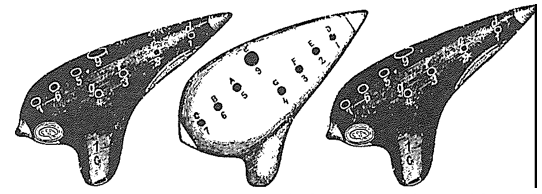One of the deleterious aspects of enclosed shopping malls is the audible environment–not the sounds of shoppers shouting, scuffling, and struggling about, around, and over imaginary bargains, but the ever-pervasive schmaltz that fills the air. There are the standard packaged long-playing tapes that the large department stores utilize; the always-too-loud FM radio that teen-oriented boutiques play; and, of course, the supposedly soothing sounds of Spanish Eyes, Tie a Yellow Ribbon, or something by Barry Manilow that ooze from organ stores. The last-named is, perhaps, the most annoying, as it is the result, in many cases, of thrown switches that provide everything from snare drums to a chamber orchestra. The pitch is that anyone with several hundred dollars and the requirement for a new piece of living room furniture can make sounds worthy of a junior high school auditorium by simply following the colored keys, numbers, or now, thanks to silicon spinoffs, alpha numerics.
Trevor Horn is best known for his production work with Foreigner and on Yes’s first big seller in over a decade, 90125 (Atco). Yes once sounded like a group of modern baroque musicians who were stranded in Morocco; Horn has sanitized the group’s sound so that it now brings Kennedy Space Center, not some backstreet bazaar to mind. Apparently, Horn felt some digital urges while in the midst of 90125, so he put together what is possibly a group of androids known as Art of Noise and created a short album titled Into the Battle with the Art of Noise (Island Records). Which brings us back to the shopping malls. The Horn concoction could serve in any of the three before mentioned settings; the cuts are often mellifluous and regularly with-it: fine china and bib overalls could both be bought to the beat. The pervasive electronic temper is such that the Art of Noise sounds like it consists of a group of organ salesmen who found themselves with an overabundance of time on their hands.
Meanwhile, there’s Thomas Dolby, the man whose The Golden Age of Wireless (Capitol) established him as the synth-kid of sophisticated dance music. The reaction to his recently released The Flat Earth (Capitol) has been amusing, as the bulk of record reviewers try to come to grips with the concept that Dolby’s talent may be more than a knack with tape recorders and electrical outlets. After all, The Flat Earth features air-powered trumpets and trombones, and electronics give way to acoustics (as he sings on the title track, “don’t you point that raygun at me”). There are honest-to gosh nuances on the album, which just might make it one of the most consequential releases of this year in the nebulous pop-rock-new-music genre. (SM)

Leave a Reply